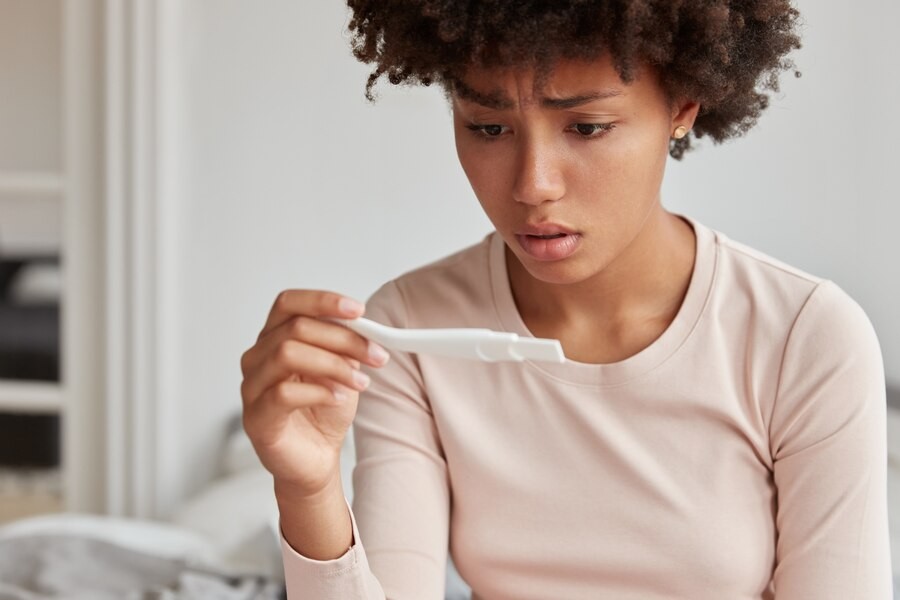Endometriosis adalah salah satu penyakit yang cukup umum dialami wanita. Gejala endometriosis yang paling sering dikeluhkan adalah nyeri haid yang berat, nyeri panggul kronis, dan kesulitan hamil.
Bagaimana endometriosis bisa memengaruhi kesuburan wanita dan menyebabkan sulit hamil? Simak ulasannya di dalam artikel berikut.
Apa itu Endometriosis?
Endometriosis adalah tumbuhnya jaringan yang mirip dengan lapisan endometrium rahim. Lapisan ini biasanya tumbuh di luar rahim seperti di ovarium, saluran tuba, atau di permukaan luar rahim.
Gejala endometriosis sangat memengaruhi aktivitas sehari-hari. Dengan endometriosis Anda bisa mengalami:
- Nyeri haid yang lebih berat daripada biasanya
- Nyeri panggul yang berlangsung terus-menerus, tidak hanya saat menstruasi saja
- Rasa sakit selama dan setelah berhubungan seksual
- Nyeri saat buang air kecil atau besar terutama selama menstruasi
- Menstruasi yang berat dan tidak teratur
- Kelelahan
- Gangguan pencernaan seperti diare, sembelit, atau kembung
Baca Juga: Inilah Faktor yang Meningkatkan Risiko Endometriosis pada Wanita
Mengapa Endometriosis Menyebabkan Sulit Hamil?
Endometriosis dapat menyebabkan infertilitas pada wanita yang memengaruhi kemampuan untuk hamil. Ini disebabkan oleh beberapa hal, di antaranya:
Peradangan di area reproduksi
Salah satu penyebab mengapa endometriosis bisa menyebabkan sulit hamil adalah adanya peradangan di area reproduksi. Jaringan endometrium yang tumbuh di luar rahim menyebabkan tubuh bereaksi dengan mengirimkan sel-sel inflamasi ke area tersebut.
Peradangan kemudian akan merusak tuba falopi, ovarium, atau jaringan di sekitarnya. Peradangan ini dapat mengganggu proses ovulasi dan pembuahan sehingga sel telur tidak dapat dilepaskan atau bertemu dengan sperma untuk membentuk embrio.
Gangguan pada kualitas sel telur
Endometriosis menyebabkan terbentuknya jaringan parut di sekitar ovarium. Jaringan parut ini akan mengganggu fungsi ovarium dan memengaruhi kemampuan ovarium dalam menghasilkan sel telur yang sehat.
Peradangan kronis dan kerusakan jaringan di sekitar ovarium juga dapat memengaruhi perkembangan sel telur. Sel telur yang dihasilkan mungkin kurang sehat atau tidak matang. Akibatnya, saat bertemu dengan sperma, peluang terjadinya proses pembuahan akan menurun.
Baca Juga: Tips Mudah Hamil Bagi Pengidap Endometriosis
Perubahan pada struktur rahim
Jaringan yang tumbuh di dinding rahim bisa memengaruhi struktur rahim dan membuatnya kurang ideal untuk implantasi embrio. Selain itu, jaringan yang tumbuh tersebut bisa memengaruhi lingkungan di dalam rahim, mengubah tingkat hormon, pH, dan faktor lain yang penting untuk proses implantasi dan perkembangan embrio.
Ketika embrio yang telah dibuahi sulit untuk menempel pada dinding rahim kemungkinan terjadinya kehamilan akan menurun.
Hormon yang tidak seimbang
Wanita dengan endometriosis sering kali mengalami ketidakseimbangan hormon, khususnya hormon estrogen. Hormon ini sangat penting dalam siklus menstruasi dan ovulasi.
Ketidakseimbangan hormon estrogen dapat mengganggu ovulasi yang normal dan berdampak pada kesuburan. Selain itu, endometriosis juga dapat menyebabkan peningkatan kadar prostaglandin, yang memicu kontraksi rahim berlebihan dan mempersulit proses implantasi embrio.
Meskipun endometriosis memengaruhi kesuburan, wanita dengan endometriosis masih bisa hamil baik secara alami maupun dengan bantuan teknologi reproduksi seperti fertilisasi in vitro (IVF) atau bayi tabung. Diskusikan lebih lanjut dengan dokter Anda atau manfaatkan layanan konsultasi kesehatan Ai Care yang dapat diunduh di App Store atau Play Store.
Mau tahu informasi seputar penyakit lainya? Cek di sini, yah!
- dr Nadia Opmalina
Pregnancy Birth & Baby (2023). How endometriosis affects pregnancy. Available from: https://www.pregnancybirthbaby.org.au/how-endometriosis-affects-pregnancy
Cleveland Clinic (2024). Endometriosis. Available from: https://my.clevelandclinic.org/health/diseases/10857-endometriosis
Better Health Channel. Pelvic inflammatory disease (PID). Available from: https://www.betterhealth.vic.gov.au/health/healthyliving/pelvic-inflammatory-disease-pid
Sania Latif and Ertan Saridogan (2023). Endometriosis, Oocyte, and Embryo Quality. Available from: https://www.ncbi.nlm.nih.gov/pmc/articles/PMC10342681/
Zawn Villines (2022). What are the risks of untreated endometriosis?. Available from: https://www.medicalnewstoday.com/articles/what-happens-if-endometriosis-is-left-untreated
Elodie Chantalat, et all (2020). Estrogen Receptors and Endometriosis. Available from: https://www.ncbi.nlm.nih.gov/pmc/articles/PMC7215544/
Cleveland Clinic (2022). Prostaglandins. Available from: https://my.clevelandclinic.org/health/articles/24411-prostaglandins












